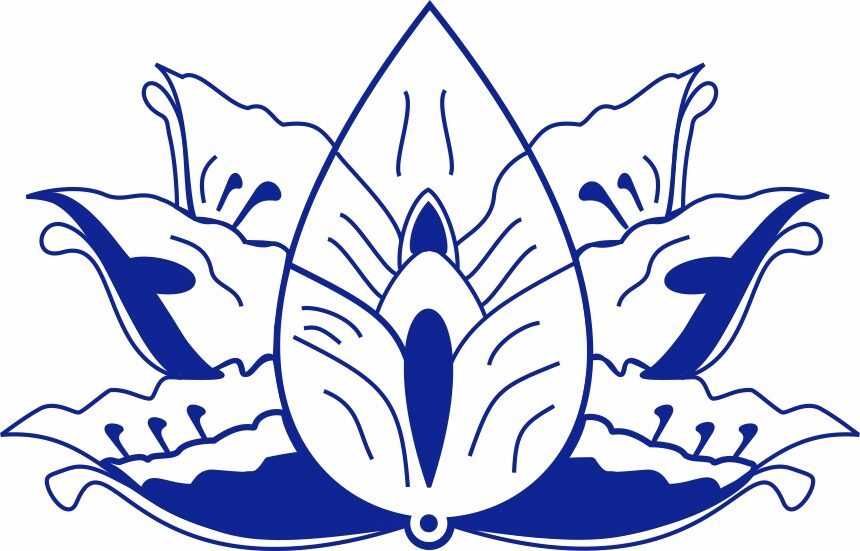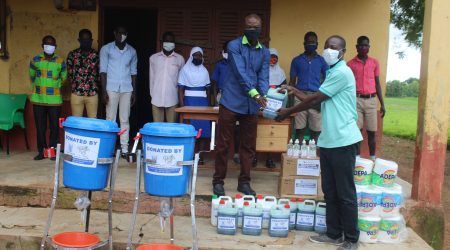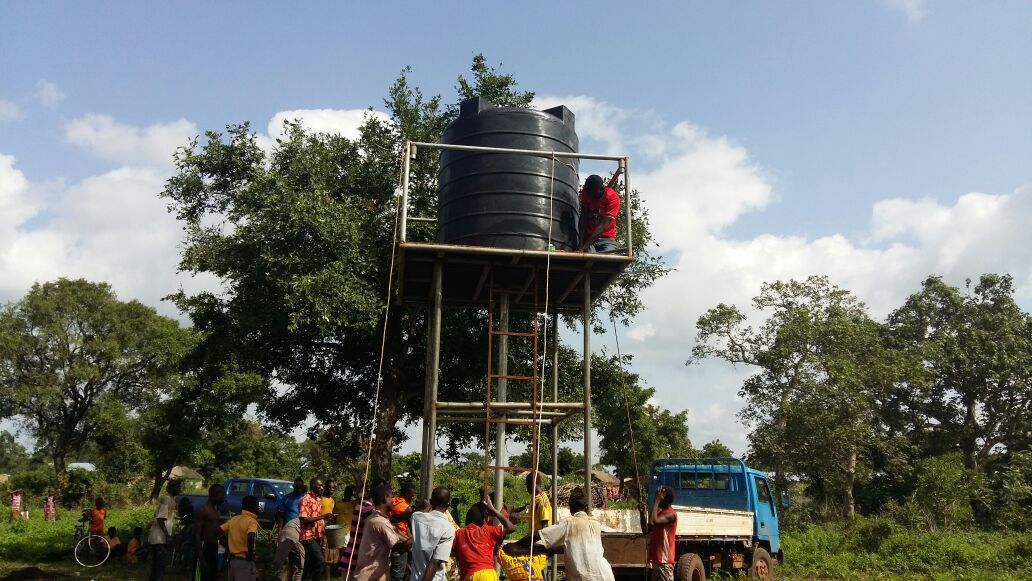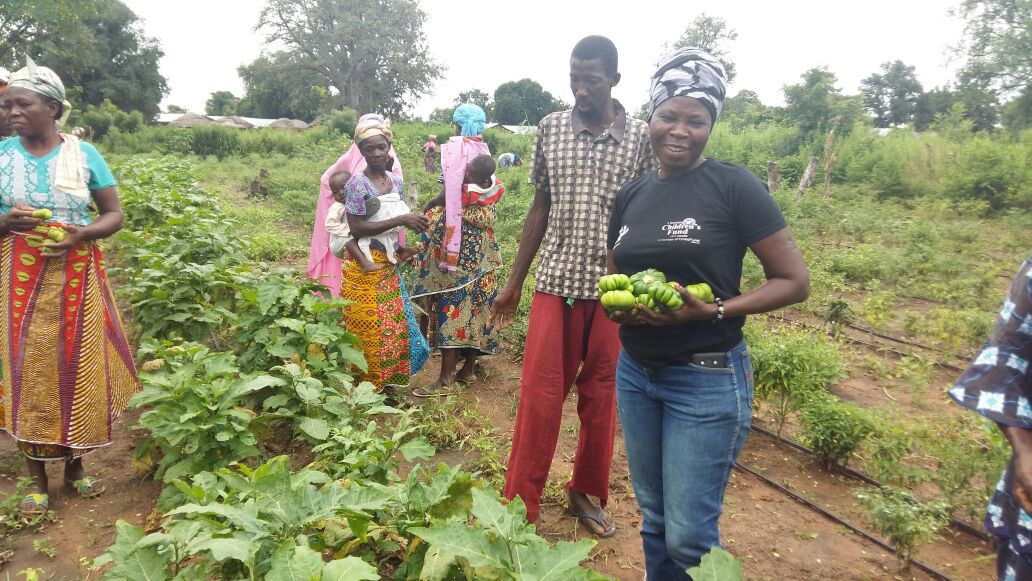INTRODUCTION
Markaz Al Bishara (MAB) and Christian Children’s Fund of Canada (CCFC) are both Christian Non-Governmental Organizations (NGOs) with similar vision and mission which have engendered a healthy partnership between us. Our collective vision for target populations is ‘To share Christ’s example of personal caring love with people and thereby create a future of hope children, their families and communities’. Our mission is ‘to provide a program which gives children access to health and nutrition care, access to quality education and recreation, access to good water and sanitation, and protection against child labour, abuse and neglect.
It was to actualize this mission that the Gumani Child Care and Family Helper Program (GCCFHP) was set up in 1997. It has Gumani, Nyanshegu, Kanvilli, Kanvilli-Tuunaayili, Jisonayili and Zagyuri as beneficiary communities, all within the Tamale Metropolitan Assembly.
This briefing will focus on activities in the various intervention areas.
EDUCATION
Access to quality basic education for all children in the program area is of major concern to us. Each year a substantial part of our budget is devoted to providing materials and infrastructure needed to guarantee effective teaching and learning in project assisted schools. Currently we support a total of over 6,000 school children in 6 communities within the Tamale Metropolis. So far we have provided a total of 6 school buildings of varying capacities to give classroom accommodation to pupils and teachers. We have provided over 1,000 dual desks for classroom furniture in the schools. Further, aside periodic textbooks supply we provide other learning materials such as exercise books, pens, pencils, erasers and sharpeners to school children at the beginning of every school year. This facilitates teaching and learning as teachers and children are equipped for note taking and class exercises. In-service training for teachers is another area which attracts our attention. On yearly basis we sponsor various refresher training workshops and seminars for teachers to further augment and sharpen their teaching skills. This we do in collaboration with the Tamale Metropolitan Directorate of Ghana Education Service.
Within the past five years we have introduced two innovations to reinforce gains being made in the education sector. One is a School Savings Plan for children with Metropolitan Insurance Company Limited; where some savings are made on behalf of the children to accumulate funds over a 6-year period to meet future educational expenses. So far we have saved a little over 74,900.00 Ghana Cedis for close to 1,300 children. The other innovation is a language program where a group of children get a special tuition in French and English Languages 3 days a week for the school year.
The program has made significant gains in the area of education. School enrollment in all the schools has been soaring over the years and most of the schools will simply be described as over-populated. Retention rate is also high and academic performance has improved significantly such that every year we have over 60% of Junior Secondary School Leavers qualifying to enter Senior Secondary School. For the past four years, we have been sponsoring twenty (20) volunteer teachers teaching in our assisted schools to pursue Untrained Teachers in Diploma Basic Education (UTDBE) course in Offinso and Dambai Training Colleges.
SPONSORSHIP AND CORRESPONDENCE MANAGEMENT
The program is basically sponsorship driven where relationships are established between sponsors inCanadaand needy children in Ghana here. It is through the donations of these sponsors or foster parents that we can provide for the basic needs of the children. Currently we have 1,875 children on the program, out of which 1,570 have active sponsors. This therefore calls for vital systems of information flow between sponsors and their children so as to nurture and strengthen the relationship and guarantee continuity. This is where correspondence work comes in and we have a number of measures by which we ensure smooth information flow between sponsors and children. These include Annual Letters, Reply-to Letters, Child Progress Reports, Christmas Cards, and Thank you Notes for Gifts. We also provide information on children to sponsors upon request.
OTHER ACTIVITIES
Apart from the social activities mentioned above we also engage in Christian mission work. This we do through tract distribution, church planting and organizing seminars or workshops for church leaders and pastors.
PROJECT MANAGEMENT PLAN
PROJECT STRUCTURE
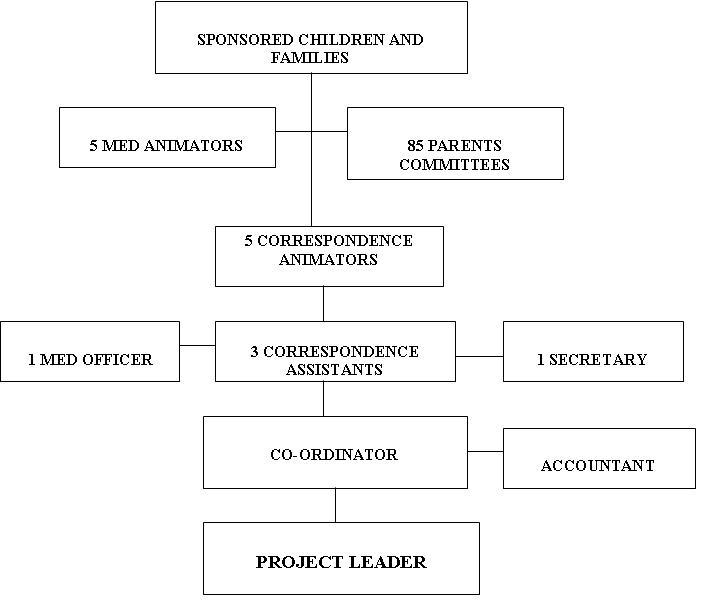
ROLES AND RESPONSIBILITIES
PROJECT LEADER
Making management decisions and giving approval for project expenses.
PROJECT CO-ORDINATOR
Day to day coordination of sponsorship and related programs. Planning and monitoring as well as networking with other organizations.
ACCOUNTANT
Budgeting, keeping financial records, preparing financial reports and bringing the books up to date.
CORRESPONDENCE ASSISTANTS
In charge of letters, CPRs etc and visiting of children. Each in charge of 500 children.
MED LOANS OFFICER
Organizing clients, disbursing and recovering loans. Organizing training for clients.
SECRETARY
In charge of producing documents, handling mails and typing of reports
MED ANIMATORS
Visiting of clients, helping to recover loans.
SPONSORSHIP ANIMATORS
Assisting in visiting of children and doing correspondence work in their communities.
PARENT COMMITTEE
Assisting in project administration at community level.
MONITORING
Inspection of invoices for material purchases and supplies
Periodic visits to projects sites by coordinator and leader to inspect progress of work
Committees asked, check on hired laborers on construction and other project.
Monthly visit to children in school and at home to monitor their health and school progress.
EVALUATION
Internal evaluation, using the year end report and the result based management (RBM) planning model. What has been achieved is checked against what was planned in terms of outputs, outcomes and impact and variances explained.
External evaluation, through financial and activity audits. This is normally carried out by donors or their representatives.
REPORTING
Monthly narrative and financial reports.
Special Reports on training workshops and seminars,
Quarterly narrative report,
Year-end reports.
